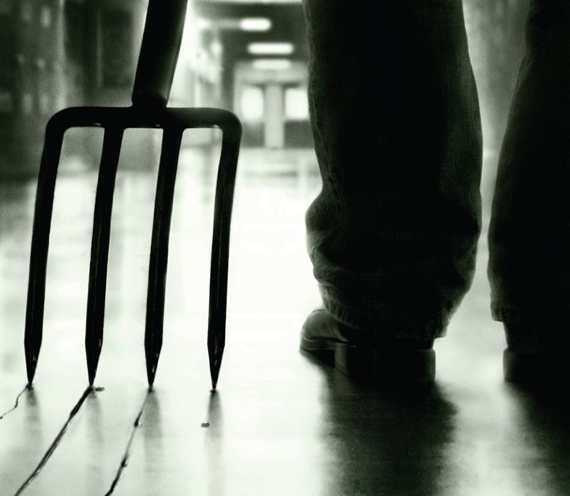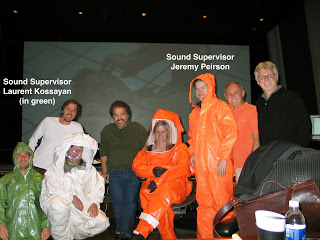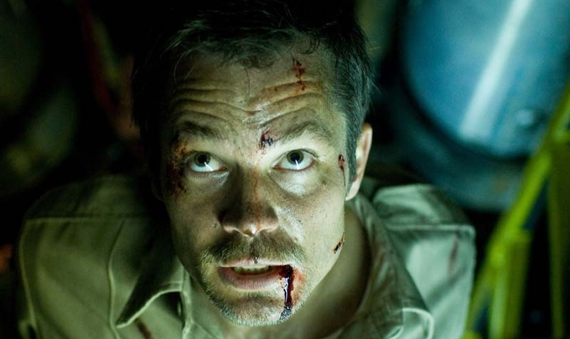
Jeremy Peirson (JP) and Laurent Kossayan (LK), sound supervisors on Breck Eisner’s “The Crazies” took some time out of their schedule to rap about the sound design for the remake of George Romero’s 1973 horror film by the same name.
DS: In an interview with Colider.com, Director Breck Eisner explained, “The town is pretty much a character in the film at the beginning and then as the military comes in and the disease takes over, you see the whole world literally turned on its side and you get to watch the decline and decay and destruction of this small, kind-of-perfect American town.” How was this idea of the ideal town implemented in the soundtrack? What sound ideas where used to show its decay?
JP: One of our original ideas was to set up this concept of decay by contrasting life and activity early on in the film. We tried to make the town as active and peaceful as possible.
LK: We made exteriors busy with kids playing and other off screen activities; Lots of birds, too – almost like a cliché ‘happy town’.
JP: As soon as the military enters and it’s clear the sickness has progressed, the birds die off. We wanted to help sell the idea that the water was poison and birds would be affected very quickly. It also helped set up a sense of isolation. The idea of taking these things away leaves you with the question of what’s left. To that end, we allowed the bugs to survive and used them in very interesting ways to evolve and flow during a scene. At the beginning of the scene we might have started off with one set of bugs, but by the end of it, we would have ebbed and flowed through four more different sets of insects, ending with something that sounded completely different.
LK: We designed a layer of drones derived from winds and insects, too, to add weirdness. Additional strange sounding animals one-offs were always placed in the distance and not very talky or obviously sonically noticeable, again to reveal the overall emptiness of the area.
DS: What was the workflow like for all the soldiers’ radio chatter and futz dialog? Was there lots of loop-group used for coverage? How much was production? What were some specific solider cues you had poke through the mix during some of the scenes?
JP: Things would come and go, as the scene needed. In town, we would also hear the clanging of the flag pole, distant metal signs rattling, and weird distant metal squeaks to add to this sense of desolation.
JP: We only recorded the orange and white bio-suit voices with the fireman’s oxygen and radio apparatus. It sounded very original and different from all of the more classic scuba type recordings. With the other lines, I created a few different treatments, mainly using speakerphone and futzbox, along with some other processing. There was a lot of material to work with and we had to process it all, so if we wanted a change, we didn’t have to wait for it to be processed, we could just audition it and then put into the movie.
There were only a few lines that really had to poke through, one of them being, “The crazies have broken through the containment zone…” We’d also want to hear a few “All Clears” and “Move it alongs”. The overall effect that we were going for was more of a busy activity and swarm of soldiers so the audience was always hearing these voices rather than the individual soldiers.
JP: The soldiers’ radio chatter was probably one of the single most important design concepts we had for this movie. The soldiers represent the threat to life as these people knew it. The trick was that we needed to have at least four different sound futzes, depending on the mask and color of the suit. We had soldiers with modified gas masks, people in the orange and white bio-suits and green suited bio-suit guards.
LK: We spent several weeks trying to find the right futzing; we eventually ended up requesting WB fire department to help us. Captain Finney came to the ADR stage with respirator mask and oxygen mask with tanks they use on the lot. We had the ADR loop group actors wear the masks and breathe through it. Breathing through the masks impacts the way you talk, so actors performed accordingly which gave it a special touch of authenticity.

DS: What was used for the sound of the pitchfork being dragged down the high school hallway? When was the idea of it bellowing down the hall conceived?
JP: I think from the script, the pitchfork was always supposed to be heard coming down the hall, and it was shot and edited with this in mind. We just followed the road map that was given to us. The sound of the pitchfork heard from a distance is actually a shovel and then it switches to the pitchfork once the principle and the sharp threat get close up. I wanted to have a sonic change from when you didn’t know what was coming to when you did.
LK: We tried everything from showls to pieces of metal of every type and believe it or not, I found this old rusty pitchfork abandoned in a friend’s garage, dragged it down their concrete alley, and the scraping of the metal resonated up to the handle incredibly. I recorded it on smooth concrete and we had found our pitchfork; it was surprisingly apple to apple.
DS: After searching your library for “explo – nuclear”, how did you approach the sound for the film’s “detonative” climax?
JP: The coolest thing about the ending explosion is the delay in the picture to when you hear it. It’s not very often you get to use that actual reality for movies, but in this case it worked extremely well. It allowed the truck to go by and then for everything to go quiet before BOOM! My approach to the nuke was to use a combination of actual explosions with more treated ones. The overall sound of the nuke was pretty layered, but tried to be as clear as possible by using different frequency ranges in the explosions. Between the boom, crunch, and the roar, I found ways to fill up the speakers and sell this enormous devastating weapon. I even got to use a sonic boom recording I captured from the space shuttle re-entering. I used some more synthy sounding explosions I made to give the nuke more character than just the classic boom and rumble.
It was also important to develop a blast wave to help sell the shock waves that end up overtaking the truck that our main characters are in. I went hunting for explosion recordings that had the shock wave or slap on them and maximized just that portion of them to help sell this effect. I used a series of rumbles, avalanches, earthquakes, and rock breaks for the final wave that overtakes the truck. Add in the tornado of debris and wind and this made for a fun sequence to work on.
DS: How was the map/computer telemetry conceptualized in the film? Did Breck have ideas of how the POV of the military machine should sound?
JP: The idea of the POV shots was that this is a jet flying overhead, doing recon, and less about some digital sounding satellite view. We have jet sounds, some military radio chatter, and even some cockpit breathing to help with this person-in-a- plane concept. The hardest part about these sequences was trying not to be too video game-like, or overly designed, in the sound fx. Breck really wanted an analog sounding machine-based system and not anything too digital sounding. I ended up using modified servos and camera motors for the zoom. The beeps were from older gear, nothing too high tech.
DS: The scene in the car wash seemed like it could be especially fun to work on, how did you guys cover it?
LK: One day I spent a few hours at a car wash recording car interiors. I ran my old Volvo 940 station wagon and a late model Ford Explorer through a couple times, micing the cabin in quad but also holding a shotgun to follow any specific details while the brushes attacked the cars. The station wagon’s long, thin body sounded great going through the wash while the SUV had a heavier feel to it. I had a lot of fun and the gas station attendant didn’t understand why I kept washing my car.
DS: How was sound used to punctuate scares in “the crazies” (whether with dynamic range or otherwise) and what clichés can and can’t be avoided for their effectiveness in the genre?
JP: We used sound to help propel us through the movie by banging into scenes with a loud sound or going quiet before unleashing a shocking sound. This may be all cliché, but in this type of movie and the way it was conceived allowed for this to work. Lulling the audience into a sense of calm before scaring them works really effectively in horror movies. Music hits and stings also played a role in these shocking moments. One trick I’ve learned is to layer the shocks with more than just a low end stinger, but I also like to use a high pitch reverse female scream to sharpen the shock. Even a few frames can add a new dimension to a stinger.
As to what clichés can and can’t be avoided, I’m not sure how to answer that exactly. It’s been my experience that some people seem to have this idea that all movies have to abide by a set of rules. Dialogue here, foley here, etc. But what we are doing is completely artistic in nature and defined by what the movie and our filmmakers need. To say that we can’t do that because it’s just not done anymore seems limiting. Why not try everything and see what works?
